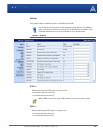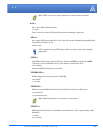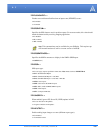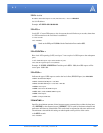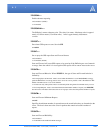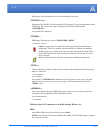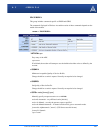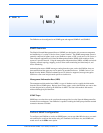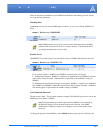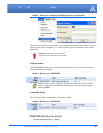
PinPoint EDGE/GPRS - User Guide, version 2.32 114
APPENDIX D Simple Network Management
Protocol (SNMP)
The PinPoint can be configured as an SNMP agent and supports SNMPv2c and SNMPv3.
SNMP Overview
The Simple Network Management Protocol (SNMP) was designed to allow remote management
and monitoring of a variety of devices from a central location. The SNMP management system is
generally composed of agents (such as your
PinPoint, a router, a UPS, a web server, a file server, or
other computer equipment) and a Network Management Station (NMS) which monitors all the
agents on a specific network. Using the management information base (MIB), an NMS can include
reporting, network topology mapping, tools to allow traffic monitoring and trend analysis, and
device monitoring.
Authentication ensures SNMP messages coming from the agent, such as the PinPoint, have not
been modified and the agent may not be queried by unauthorized users. SNMPv3 uses a User-
Based Security Model (USM) to authenticate and, if desired or supported, message encryption.
USM uses a user name and password specific to each device.
Management Information Base (MIB)
The management information base (MIB) is a type of database used to compile the information
from the various SNMP agents. Reports from various agents, such as the
PinPoint, are sent as data
in form designed to be parsed by the NMS into its MIB. The data is hierarchical with entries
addressed through object identifiers.
SNMP Traps
SNMP traps are alerts that can be sent from the managed device to the Network Management Sta-
tion when an event happens. Your PinPoint is capable of sending the linkUp trap when the network
connection becomes available.
PinPoint SNMP Configuration
To configure your PinPoint to work as an SNMP agent, you can use either Wireless Ace, or a termi-
nal connection to configure the modem using AT commands. In Wireless Ace, the SNMP com-
mands are all on the Other menu option.



